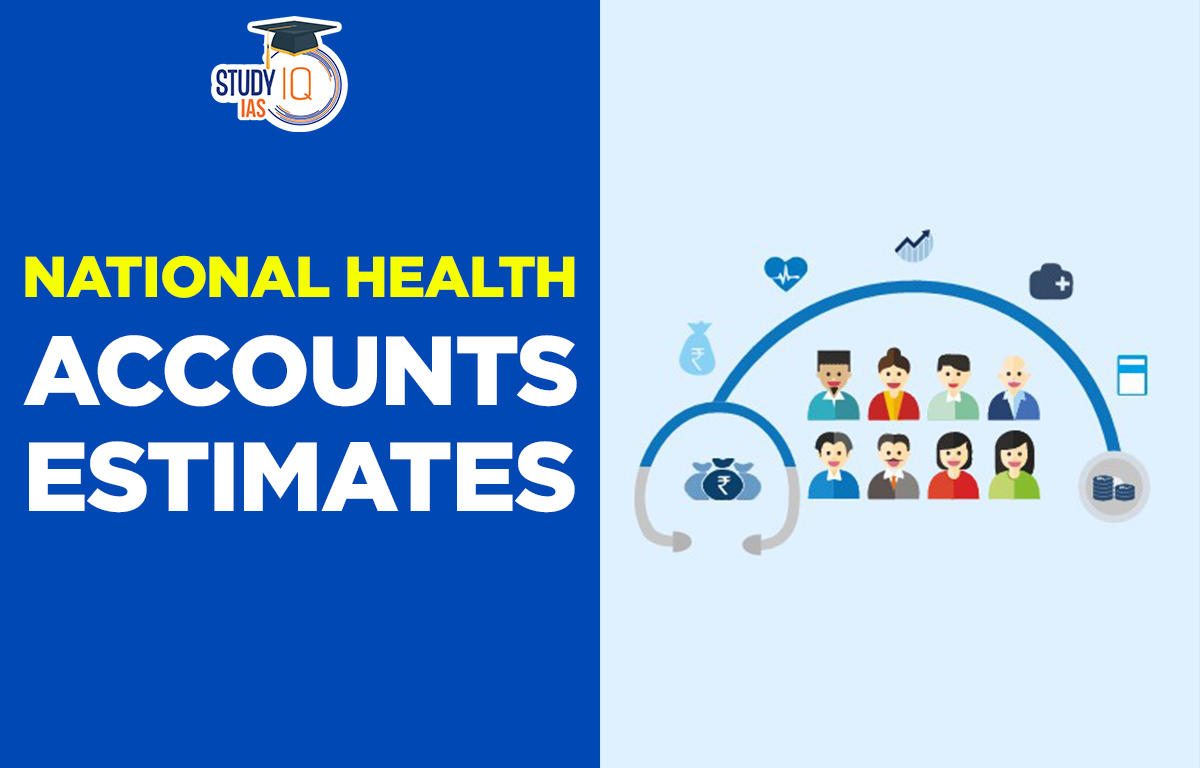Table of Contents
Context: The National Health Accounts Estimates report for India (2019-20) has been released recently.
About the National Health Accounts Estimates report for India (2019-20)
- This report presents National Health Accounts (NHA) Estimates for India for Financial Year 2019-20.
- National Health Accounts is a tool to describe health expenditures and the flow of funds in both Government and Private sector in the country.
- These estimates are derived within the framework of National Health Accounts Guidelines for India, 2016 and adhere to System of Health Accounts 2011 (SHA 2011), a global standard framework for producing health accounts.
- SHA 2011 is a framework developed by the World Health Organization (WHO), the Organisation for Economic Co-operation and Development (OECD), and the European Union (EU) to provide a standardized method for measuring health spending across countries.
- NHA estimates 2019-20 is the seventh round of estimates for India.
Major findings of the National Health Accounts Estimates report for India (2019-20)
What are the Key Health Expenditure Estimates for India?
- For the year 2019-20, Total Health Expenditure (THE) for India is estimated to be Rs. 6.5 lakh crores (3.27% of GDP and Rs. 4,863 per capita).
- Components of THE:
- THE constitutes current and capital expenditures incurred by Government and Private Sources including External/Donor funds.
- Current Health Expenditure (CHE) accounts for 90.52% of THE and capital expenditures make up 9.48% of THE.
- Government Health Expenditure (GHE) accounts for 41.41% of THE or 1.35% GDP.
- Household’s Out of Pocket Expenditure on health (OOPE) account for 47.07% of THE or 1.54% of GDP.
- Private Health Insurance expenditure accounts for 6.99% of THE.
Who contributes to Current Health Expenditure (CHE)?
- Of the total Current Health Expenditure (CHE), 17.28% is attributed to Government Hospitals and 28.50% is attributed to Private Hospitals.
- Rest of the CHE is attributed to other Government Providers (incl. PHC, Dispensaries), and Other Private Providers (incl. private clinics) etc.
What Services are Consumed?
- In terms of percentage of Current Health Expenditure (CHE), 33.94% is attributed to Inpatient Curative Care, 19.29% to Outpatient Curative Care, 0.49% to Day Curative Care, 3.52% to Patient Transportation, 4.04% to Laboratory and Imaging Services, 18.50% to Prescribed Medicines, and 3.47% to Over-the-Counter (OTC) Medicines.
- In addition, the percentage of CHE attributed to Therapeutic Appliances and Medical Goods is 0.12%, to Preventive Care is 10.16%, and to Other expenditures is 2.17%. Furthermore, 4.30% of CHE is attributed to Governance, Health System, and Financing Administration.
- Total Pharmaceutical Expenditure is 35.11% of CHE (includes prescribed medicines, over-the-counter drugs, etc.)
- Expenditure on Traditional, Complementary, and Alternative Medicine (TCAM) is 4.36% of CHE.
- Current Health Expenditure attributed to Primary Care is of around 48.0%, Secondary Care of 32.5%, Tertiary care of 13.5% and governance and supervision of 4.3%.
- When disaggregated; government’s expenditure on Primary Care is 55.9%, Secondary Care is 29.6% and Tertiary Care is 6.4%.
- Private expenditure on Primary Care is 37.2%, Secondary Care is 36.5% and Tertiary Care is 23.3%.
Comparison with 2014-15 National Health Accounts:
- OOPE: Share of Out-of-Pocket Expenditure (OOPE) in Total Health Expenditure declines from 62.6% in 2014-15 to 47.1% in 2019-20.
- Government expenditure on health: Government Health Expenditure’s share in country’s total GDP increases from 1.13% (2014-15) to 1.35% (2019-20).
- Additionally, in General Government Expenditure (GGE), the share of health sector spending has steadily increased from 3.94% to 5.02% between 2014-15 and 2019-20.
- Per capita health expenditure: In per capita terms, Government health expenditure has doubled from Rs. 1,108 to Rs. 2,014 between 2014-15 to 2019-20.
- Primary healthcare: The share of primary healthcare in Current Government Health Expenditure (CGHE) has increased from 51.3% in 2014-15 to 55.9% in 2019-20.
- SSE: The share of Social Security Expenditure (SSE) on health, which includes government-funded health insurance, medical reimbursement to government employees, and social health insurance programs, in THE (Total Health Expenditure) has increased from 5.7% in 2014-15 to 9.3% in 2019-20.
- Private health insurance: Private health insurance share is also going up which is a sign of maturity for a country in terms of the insurance arena. It complements the government system of primary, secondary and tertiary care.
Related Terms
- Out-of-Pocket Expenditure (OOPE) in health:
- Out-of-pocket expenditure is the money paid directly by households, at the point of receiving health care. ‘
- This occurs when services are neither provided free of cost through a government health facility, nor is the individual covered under any public or private insurance or social protection scheme.
- General Government Expenditure (GGE):
- GGE involves all types of expenditure, current and capital. It includes all types of revenue. GGE includes funds that are provided by donors and channeled through the government.
- It is not the same as the General Government Final Consumption, which comprises only current spending.
























 WhatsApp
WhatsApp